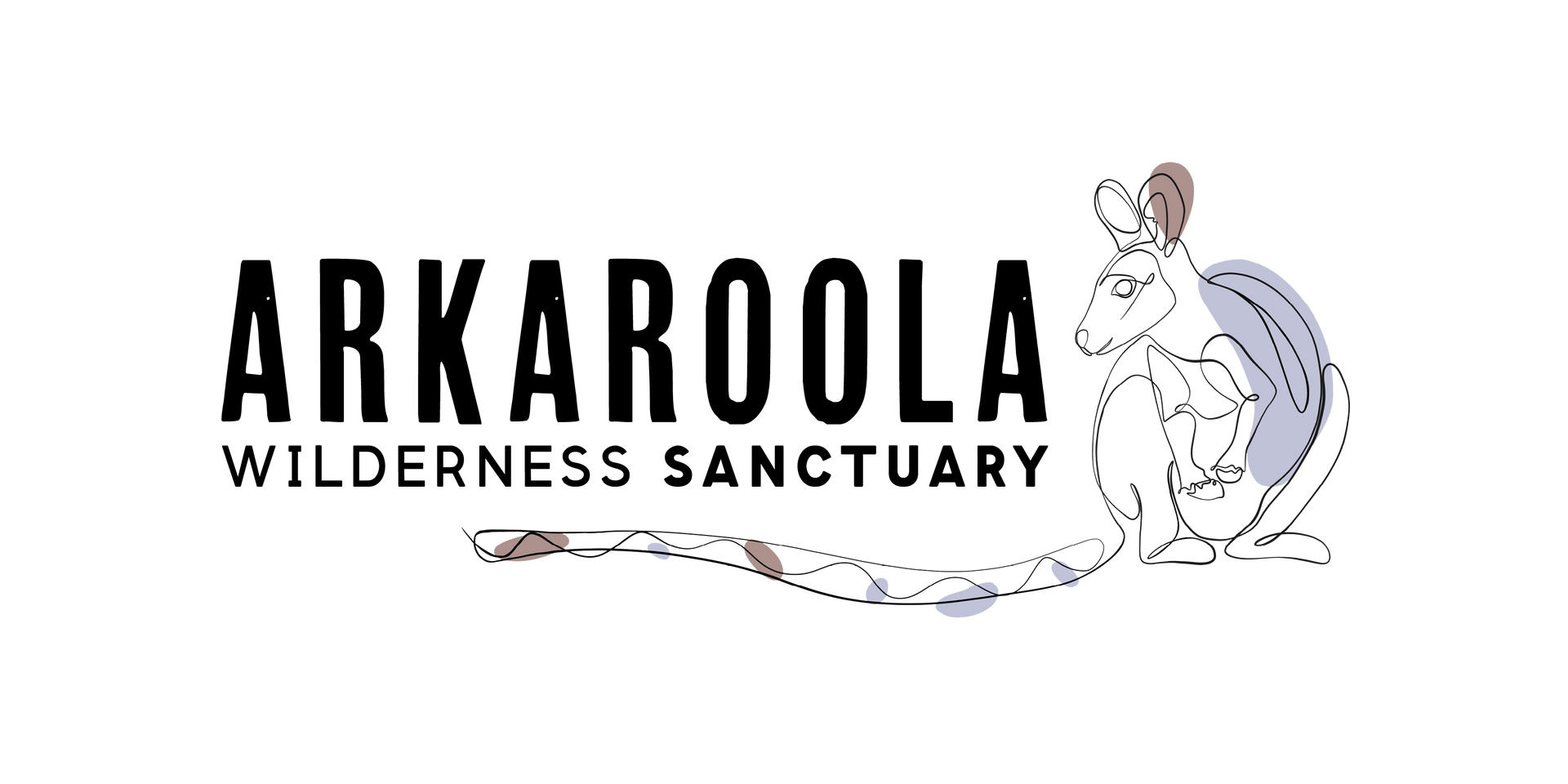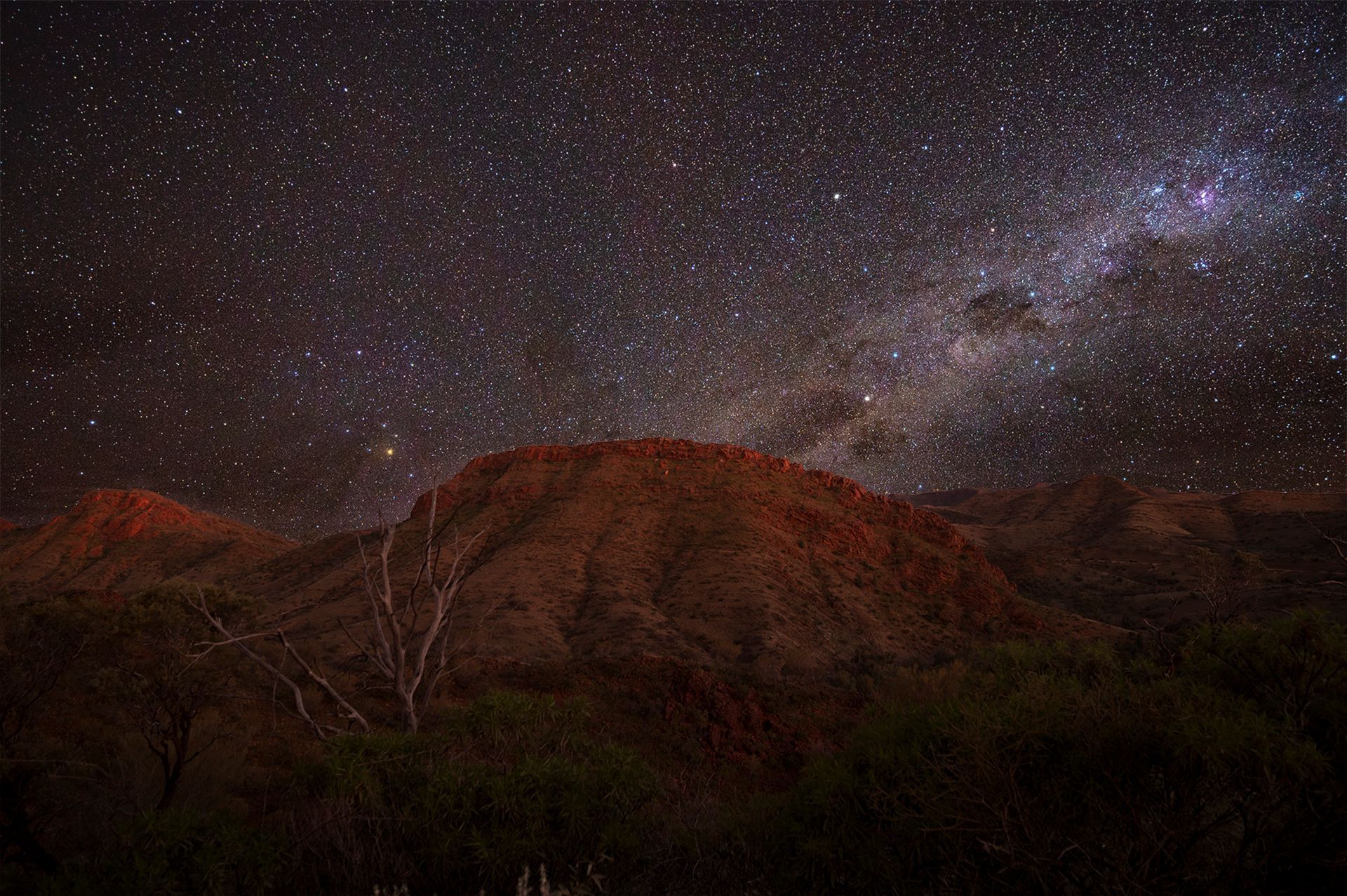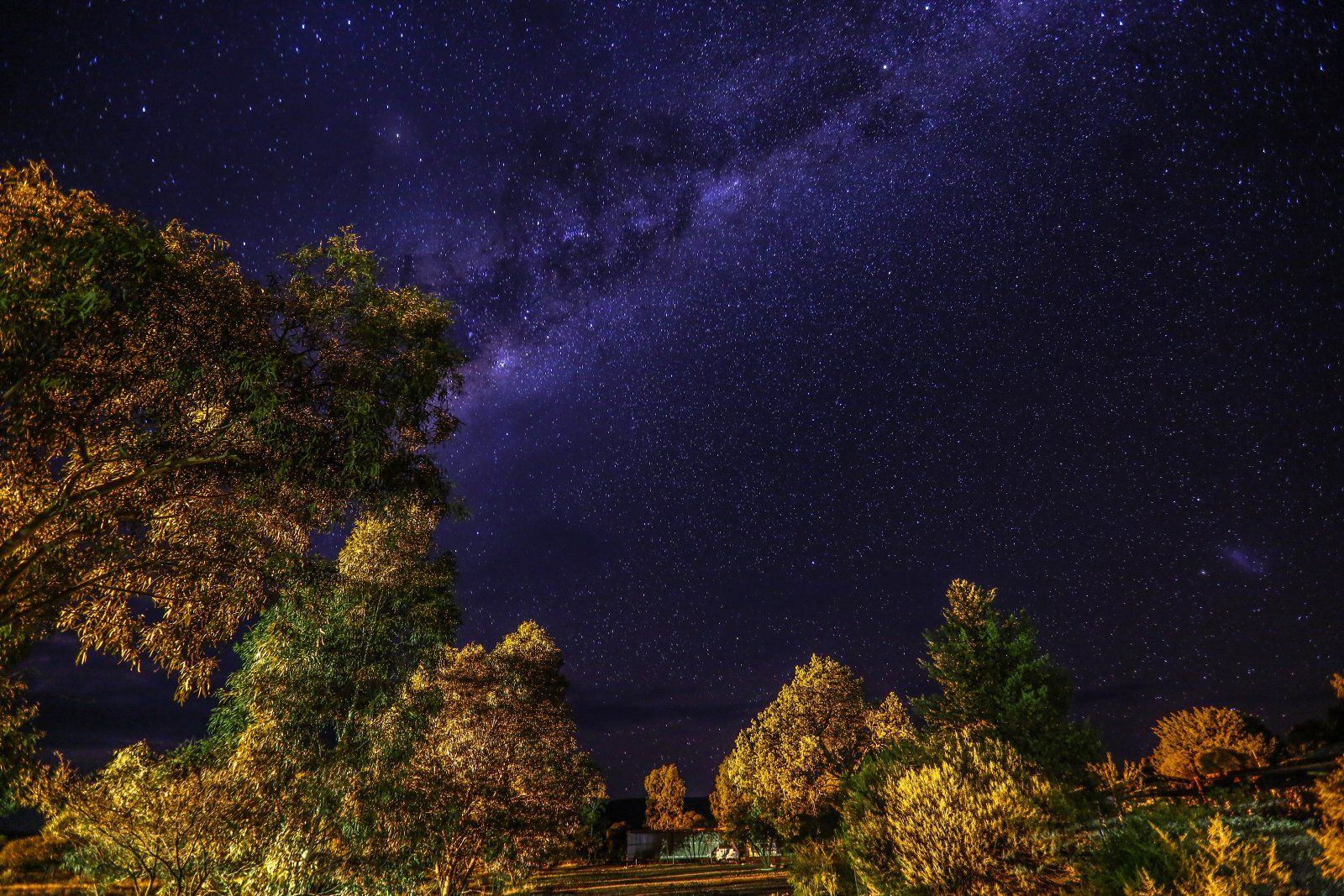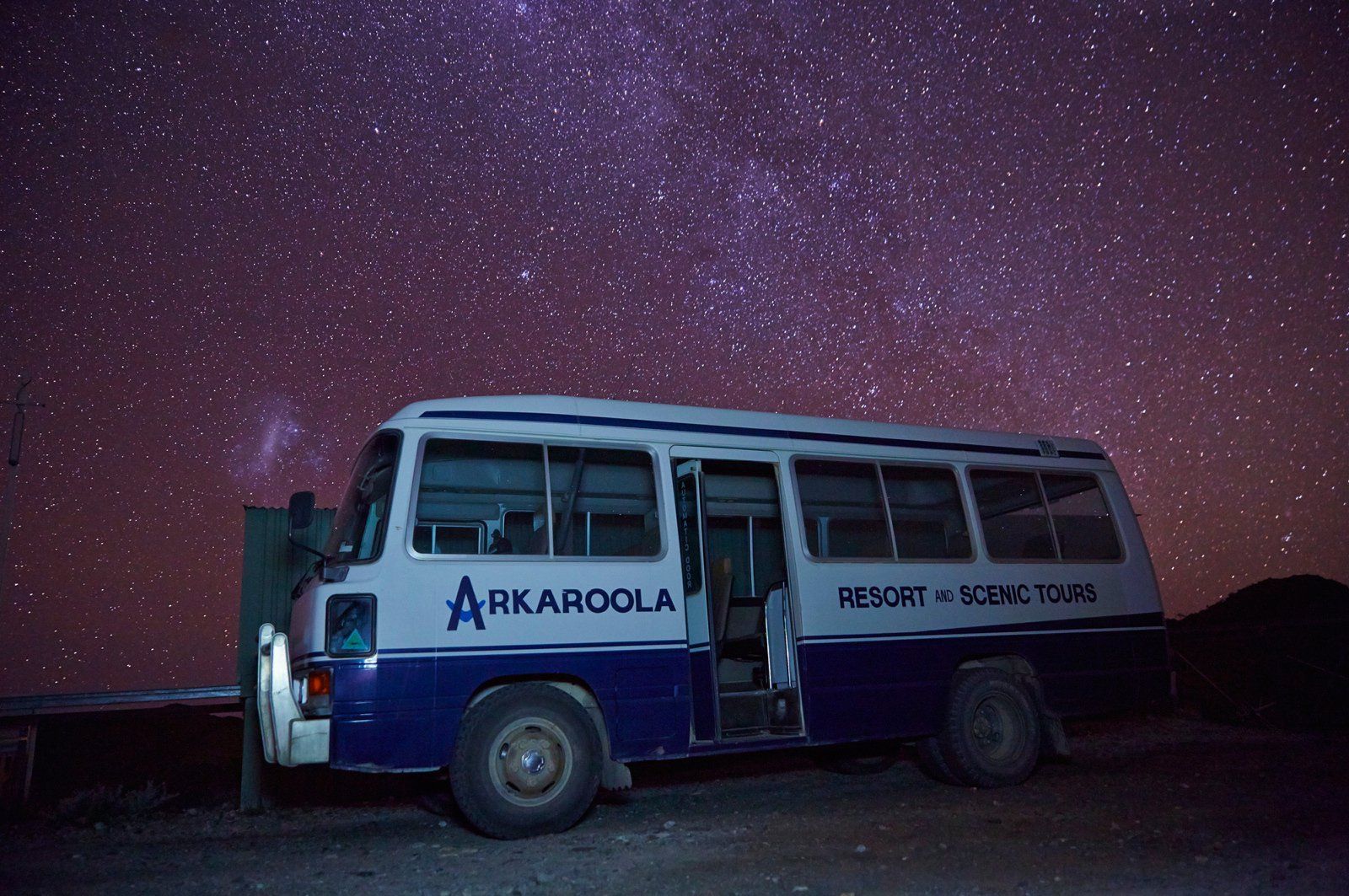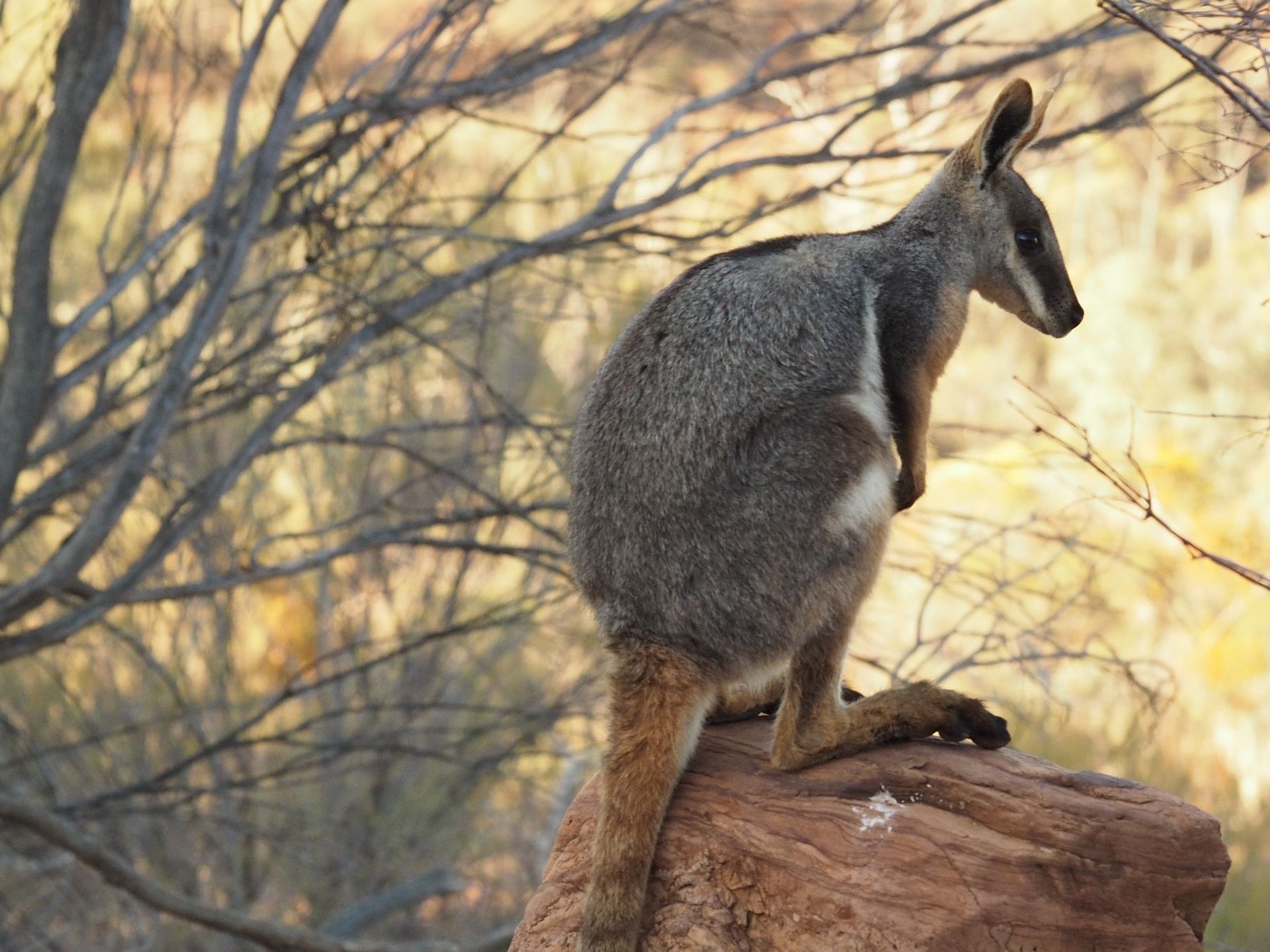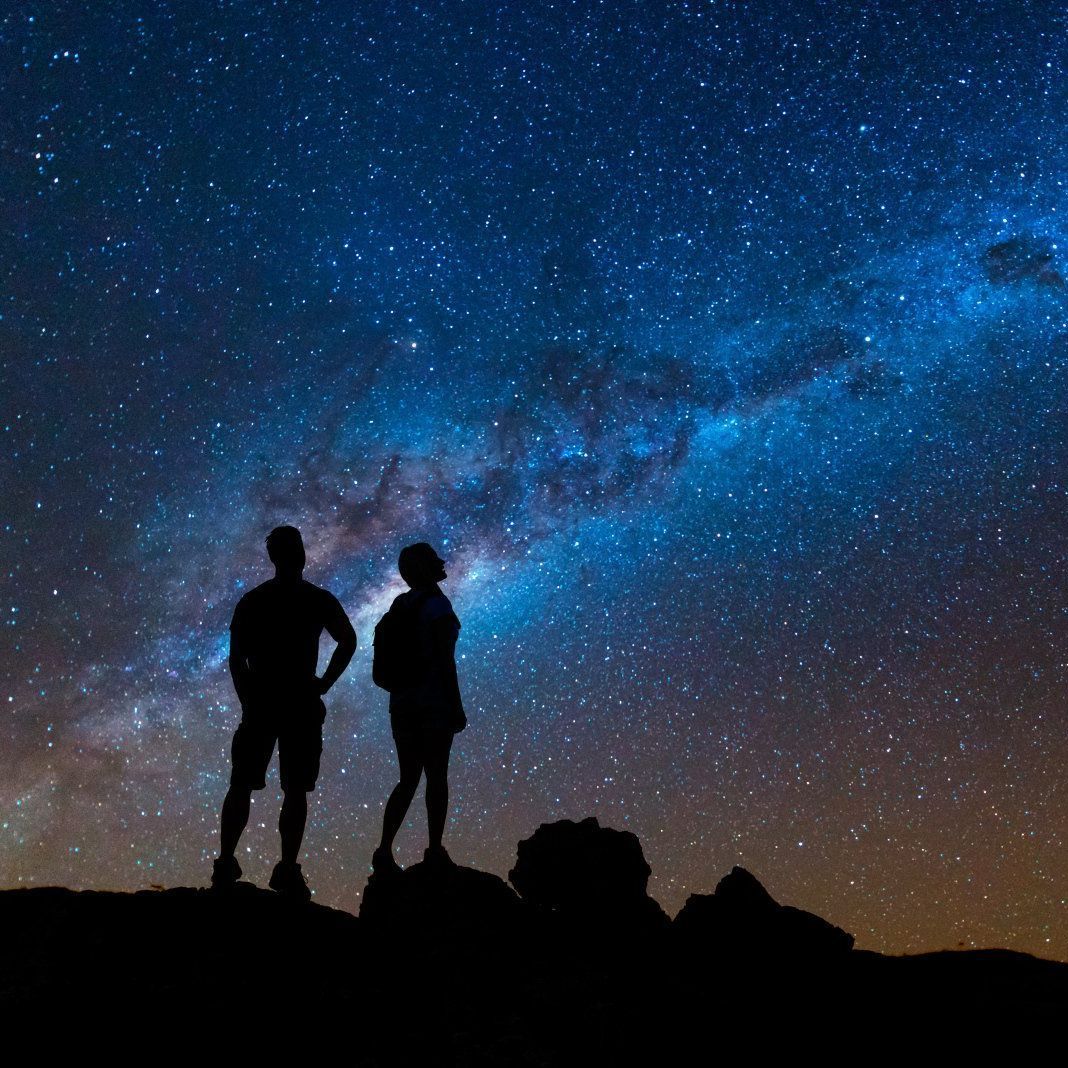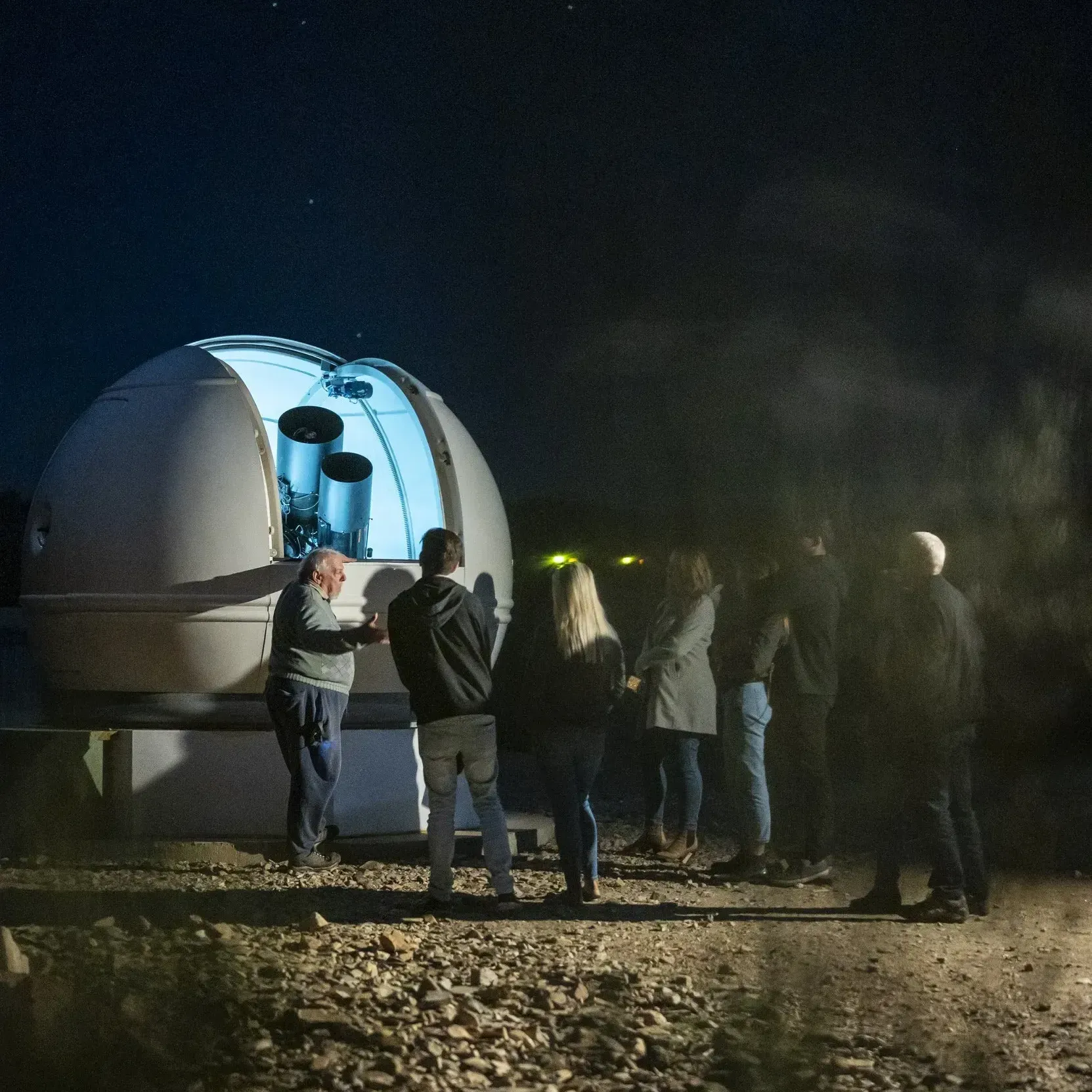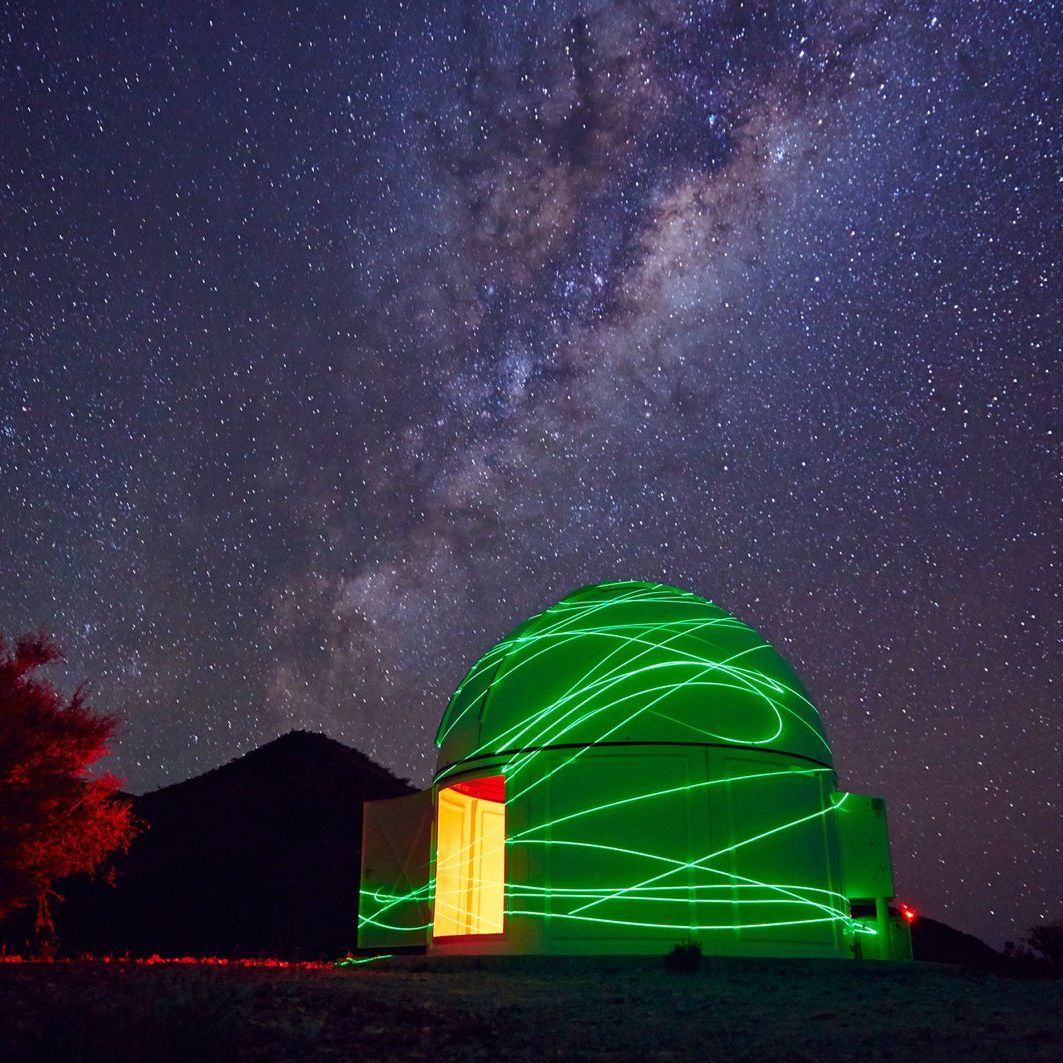Welcome to South Australia’s first International Dark Sky Sanctuary
Arkaroola's designation as South Australia's first International Dark Sky Sanctuary is undeniably a landmark achievement. It highlights the value of our night skies, not just as a natural spectacle, but also as an irreplaceable resource for science, culture, and health. This recognition puts Arkaroola, and indeed South Australia, on the global map as a leader in preserving the night sky, promoting sustainable tourism, and championing environmental conservation.
In a world increasingly bathed in artificial light, the magnificence of the night sky is slowly fading from our view. However, sanctuaries like Arkaroola, recently recognised by the
International Dark-Sky Association, are taking leaps and bounds to preserve the connection humans have to the dark night sky. These sanctuaries provide havens for wildlife, pristine skies for astronomers, and a chance for all to marvel at the magic and awe of the dark sky.
Arkaroola, a breathtaking wilderness sanctuary in South Australia, has earned the prestigious title of an International Dark Sky Sanctuary. Its rugged landscape, unique wildlife, and ancient Aboriginal culture draw tourists, geologists, biologists, and astronomers alike. The sanctuary's remote location and clear skies make it a haven for celestial observation and hold significant cultural importance for the local indigenous communities.
Arkaroola's designation, formally approved on the 17th of July 2023, is a milestone in preserving our night skies, understanding the cosmos, and protecting the environment. Here, we dive into why the Dark Sky Sanctuary Accreditation is so important and the many ways you can experience it for yourself.
The Significance of Dark Sky Sanctuaries
In the grand canvas of time, artificial light is a relatively new invention that has fundamentally altered our relationship with the night. The same light that illuminates our cities, towns, and homes, enabling us to work, play, and socialise into the night, is also the source of light pollution. Essentially, light pollution is the excessive, misdirected, or obtrusive artificial light produced by human activities. This excessive light has severe, often overlooked, implications for our planet, wildlife, human health, and scientific research.
For wildlife, the encroachment of artificial light disrupts natural rhythms and behaviours. Many species, from tiny insects to large mammals, rely on the cycle of day and night for survival - to hunt, to hide, to migrate, and to reproduce. Light pollution interferes with these patterns, threatening biodiversity and ecosystems. For humans, excessive exposure to artificial light at night can lead to a myriad of health problems, including sleep disorders, reduced immune function, and increased risks for obesity, depression, and even certain types of cancer.
Astronomy, a science that relies on the ability to observe celestial bodies in dark skies, has been significantly hampered by light pollution. Glare, skyglow, and other types of light pollution wash out starlight in the night sky, hinder astronomical research, and hide celestial features from view. This has grave implications not only for scientific progress but also for our cultural and philosophical perspectives, as we lose our connection with the cosmos.
This is where the importance of International Dark Sky Sanctuaries comes to the fore. They provide safe havens in our increasingly light-polluted world where wildlife can thrive, where human health can benefit from natural darkness, and where scientists can carry out astronomical research under optimal conditions. Moreover, these sanctuaries allow us to preserve and experience the ethereal beauty of truly dark skies teeming with stars, a sight that has sparked human imagination and scientific curiosity for millennia.
Arkaroola joins an esteemed group of International Dark Sky Sanctuaries across the globe, from the Cosmic Campground in New Mexico, the first sanctuary of its kind, to the Aotea / Great Barrier Island in New Zealand, renowned for its spectacular southern skies. These sanctuaries, each unique in their own way, collectively contribute to preserving our global heritage of starry skies, serving as vivid reminders of our place in the cosmos, and our responsibility to protect this precious resource for generations to come.
The Path to Arkaroola Becoming a Dark Sky Sanctuary
Arkaroola, rich in its unique natural attributes and historical significance, has long been a location of interest for astronomers. Its isolated position away from urban centres, combined with South Australia's characteristically clear skies, made it an optimal place for observing the cosmos. The Indigenous Adnyamathanha people, traditional custodians of the Arkaroola region, have long revered the night sky, embedding it in their rich cultural traditions and lore. In more recent times, Arkaroola’s astronomical significance has been celebrated through the establishment of the
Arkaroola Astronomical Observatory, which has been instrumental in educating the public about the night sky.
The journey towards Arkaroola's designation as an International Dark Sky Sanctuary was not a straightforward path but rather a collective effort spanning several years. It required collaboration from the sanctuary’s management, local communities, government bodies, and the International Dark-Sky Association (IDA). Key steps in this process included gathering extensive data on the quality of Arkaroola's night sky, implementing strategies to control light pollution within the sanctuary, and developing a comprehensive long-term plan to protect and manage the area’s dark sky resource.
One crucial aspect of Arkaroola’s candidacy was demonstrating its exceptional night sky quality. This involved detailed measurements of sky brightness and meteorological conditions over an extended period, illustrating that the sanctuary's night sky met the stringent requirements set by the IDA. Concurrently, efforts were made to reduce existing light pollution within the sanctuary, which included revising lighting infrastructure to minimise skyglow and glare.
In addition to its natural attributes and light pollution management efforts, Arkaroola's strong commitment to public education about the importance of dark skies and its ongoing collaboration with local indigenous communities also strengthened its bid for sanctuary status.
After a careful review of Arkaroola’s application, the International Dark-Sky Association officially recognised Arkaroola as an International Dark Sky Sanctuary on 17th July 2023. The designation marked a milestone not only for Arkaroola but for the whole of South Australia, bringing global attention to the region's incredible natural beauty and commitment to preserving the night sky. The official announcement celebrated Arkaroola's exemplary dark skies and acknowledged the efforts made by the sanctuary and its supporters to achieve this recognition. It was a moment of great pride for all involved and a testament to what can be accomplished through dedication and collective effort.
The Wildlife of Arkaroola Wilderness Sanctuary
The significance of the Dark Sky Accreditation is not just for the human visitors to the area, the local wildlife will also benefit greatly from the work done to preserve their favoured darkness.
The darkness of the Arkaroola Wilderness Sanctuary plays a pivotal role in the survival and thriving of its diverse animal inhabitants. Many of these creatures have adapted to a nocturnal lifestyle, taking advantage of the safety and reduced visibility that darkness offers. Nocturnal behaviours enable them to forage for food, engage in social interactions, and avoid daytime predators, ensuring their continued existence within this unique ecosystem.
For animals like the Wedge-Tailed Eagles and Australian Ringneck Parrots, darkness provides a crucial period of rest and energy conservation. It allows them to roost safely during the night, preparing for their active hunting and foraging endeavours during the day. Additionally, the night provides optimal conditions for hunting and predation for nocturnal predators such as the Southern Boobook Owl and the Large-Blotched Python. Their specialised senses, like night vision and acute hearing, are well-suited for navigating the dark landscape, aiding them in locating and capturing prey more efficiently.
Darkness also fosters niche separation, allowing species like the Yellow-Footed Rock Wallaby and the Short-Tailed Grass Wren to occupy specific ecological roles within the sanctuary without competing with non-nocturnal animals. The nighttime environment also encourages social bonding among certain species, like the White-Browed Babblers, who display communal behaviours best suited for interactions in the dark. The cooler temperatures of the night serve as a vital opportunity for thermoregulation, enabling animals to regulate their body heat and mitigate the challenges of the arid environment.
The darkness of the Arkaroola Wilderness Sanctuary serves as a critical factor in the delicate balance of its ecosystem. Nocturnal adaptations, protection from predators, energy conservation, optimal hunting capabilities, niche separation, social interactions, and thermoregulation are all essential elements that demonstrate the significance of darkness for the thriving and survival of the diverse and captivating wildlife in this unique sanctuary.
Ways to enjoy the Dark Sky Sanctuary for yourself
Under the Stars - Stargazing Experience
Explore the Cosmos
Observatory Tour
Arkaroola's designation as South Australia's first International Dark Sky Sanctuary is undeniably a landmark achievement. It highlights the value of our night skies, not just as a natural spectacle, but also as an irreplaceable resource for science, culture, and health. This recognition puts Arkaroola, and indeed South Australia, on the global map as a leader in preserving the night sky, promoting sustainable tourism, and championing environmental conservation.
The significance of this designation extends beyond regional or even national boundaries. It sends a strong message to the world about the urgency of protecting our dwindling dark skies. It underscores the necessity for a collective, global effort in combating light pollution and preserving the unspoiled night sky for future generations.
Every individual, community, and nation has a role to play in this endeavour. As a visitor, you can contribute by choosing travel destinations like Arkaroola that value and protect their dark skies. Your visit not only supports their conservation efforts but also offers an unforgettable experience under the stars. As a global citizen, you can contribute by becoming more conscious of your lighting usage, supporting legislation that promotes responsible outdoor lighting, and educating others about the value of dark skies.
Arkaroola's star-studded skies are a testament to the magnificence of the universe we're a part of, a timeless reminder of our cosmic origins, and a call to action to protect this shared heritage.
So, whether you're an avid stargazer, a casual observer, or just someone who appreciates natural beauty, Arkaroola and its starlit canvas await you. Come, experience the darkness, feel the connection, and join the mission to keep our skies dark, for today and for the generations to come.




